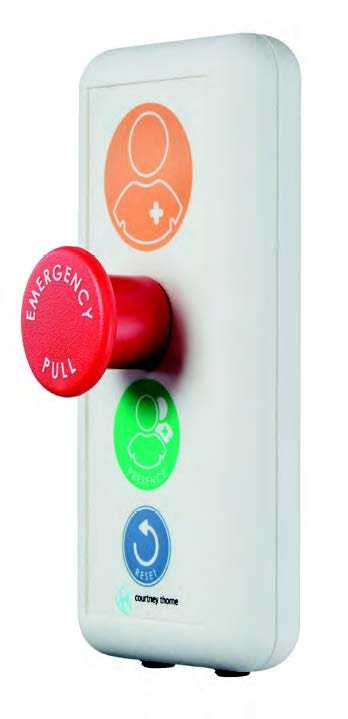
Nurse call systems are a vital tool for patients and staff.
But, as one of a hospital’s most-frequently-touched items of equipment there are huge implications for infection control. Here we look at how manufacturers are addressing this challenge.
A shift in focus for patient handsets
Phil Wade, marketing director at Static Systems Group (SSG) explains, “The primary focus for nurse call product designers used to be the electronics and circuit boards, with the enclosure somewhat of an afterthought. Consequently, units would quite often be bulky and not really designed for easy cleaning.
“In the 1990s this changed with the introduction of the first waterproof nurse call handsets. And ever since, infection control has remained at the forefront of all our new product design briefs, usually starting before any electronic development,” he adds.
Other products
Associated equipment and bedhead services trunking are increasingly also being designed with infection control in mind.
“We address design challenges such as minimising the infection control risk associated with fixings, eliminating gaps, and ensuring that any corners are smooth and rounded,” said Wade.
New design and production techniques
The SSG & Biomaster partnership
This partnership sees its Addmaster antimicrobial technology incorporated into all touchable parts of SSG nurse call hand units. This innovation works by inhibiting the growth of harmful bacteria such as MRSA and E.coli, thus reducing the likelihood of it spreading throughout the environment.
Medicare Systems
Medicare systems call points incorporate Microban within the labels and an antimicrobial additive is added to the plastic at manufacture. This impacts infection prevention and control within the hospital environment.
“All nurse call equipment should be designed and manufactured with infection prevention and control in mind,” said a company spokesman.
“Pear push leads are also manufactured with these additives and need to be designed so they can be dipped into cleaning solutions that are normally used to clean hospital surfaces. This will help eliminate the spread of any infection.”
Courtney-Thorne’s Altra Health system
All parts of this system that come into contact with users are manufactured from easy-clean, waterproof, antibacterial materials.
The company has also focused its R&D on other parts of the system –namely the trailing leads running from wall-mounted alarm points to the handheld devices.
Its Altra-Link bed and floor sensors no longer need to be physically wired to the bedhead unit. Instead, using wireless connectivity, devices are paired with the bedhead unit and can communicate directly with it.
Dave Hewitt, the company’s sales and marketing manager, said, “There is now no need for trailing wires collecting dirt off the floor and causing serious tripping hazards for both nursing staff and patients.
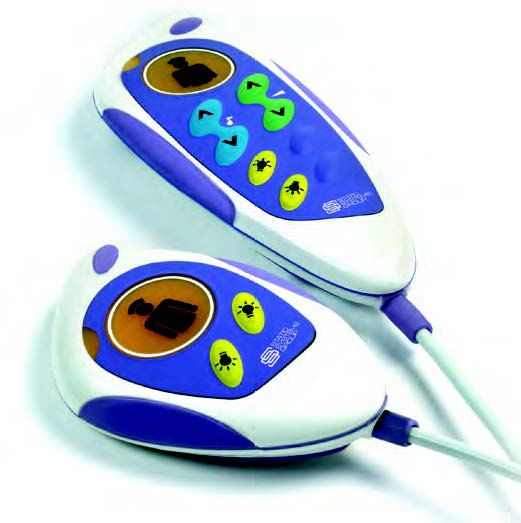
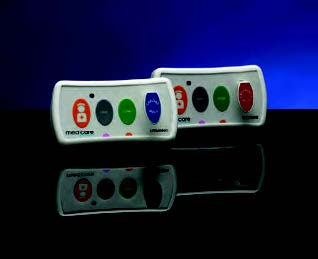

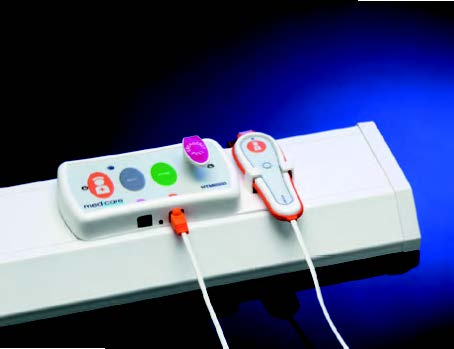
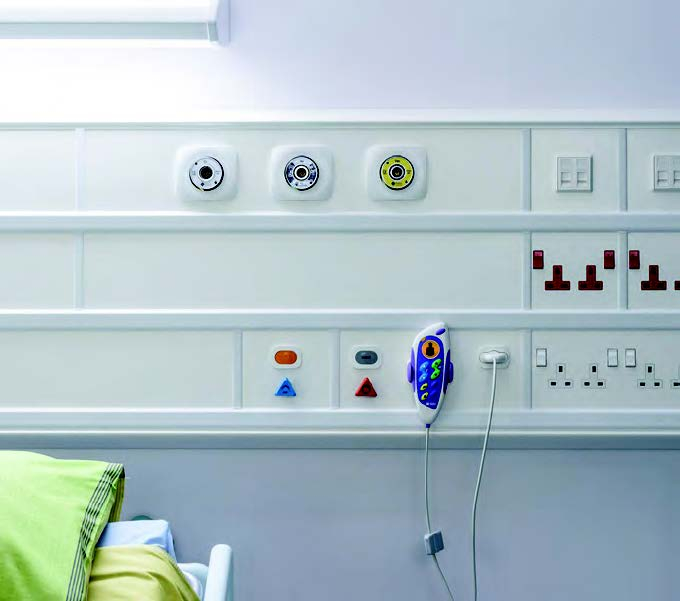
Modern methods
“Courtney-Thorne’s wireless nurse call solutions first pioneered many years ago have made it far easier to physically clean the bedside call buttons.
“Simply unclipping the unit from its wall mount and then cleaning it before clipping it back again makes any wired solution a most-impractical proposition for modern cleaning.”
He added: “All manufacturers of hospital hardware should ensure they use antibacterial surfaces and produce systems that are easy to clean.
“However, reducing the need for cleaning by decreasing the quantity and frequency of touch points is where a smart nurse call solution will always win over.”
Wade concludes: “Infection control will undoubtedly remain a key consideration for any products found in healthcare settings, so manufacturers must continue to ensure it is given high priority on the design brief.”